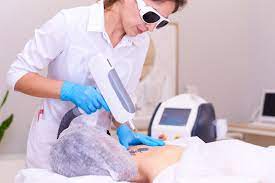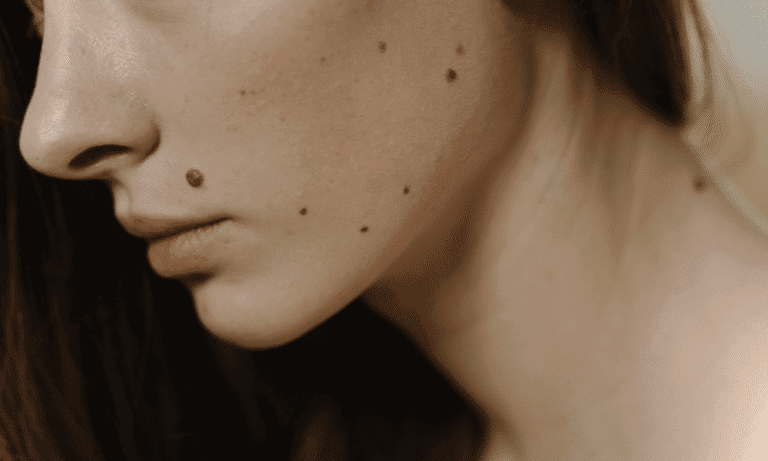How many sessions of tattoo removal are typically needed for complete results?
Tattoo removal has emerged as a sought-after procedure for those wishing to erase ink from their skin, whether due to personal evolution, professional requirements, or simply a change of heart. This process involves various techniques, each with its own set of considerations including effectiveness, pain level, and recovery time. As technology advances, the options for tattoo removal have expanded, offering more efficient and less painful methods than ever before. Understanding these options is crucial for making an informed decision that aligns with one’s health goals and lifestyle preferences.
Overview of Laser Tattoo Removal Process
Laser Technology
Laser tattoo removal involves concentrated laser beams. These beams target the tattoo ink under the skin. The laser breaks down the ink into smaller particles.
The body then naturally removes these particles. This process is safe and effective with the right technology. Different lasers are used based on the tattoo’s colors and depth.
Treatment Sessions
Multiple sessions are usually needed for complete removal. The number of sessions depends on several factors:
- Size of the tattoo
- Colors used in the tattoo
- Age of the tattoo
- Depth of ink penetration
For a large tattoo, more sessions will be required compared to a small one. Each session is spaced out to allow healing.
Safety Measures
Safety and effectiveness rely heavily on technology and technique. It’s crucial to choose a qualified professional for this procedure.
Pros:
- High success rate in fading tattoos.
- Can target specific areas without damaging surrounding skin.
Cons:
- May cause discomfort during treatment.
- Risk of temporary redness, swelling, or blistering post-treatment.
Choosing an experienced technician minimizes risks associated with laser removal methods.
Factors Influencing Tattoo Removal Sessions
Tattoo Age
Older tattoos fade over time. This makes them easier to remove compared to newer ones. The ink in older tattoos has already started breaking down.
Newer tattoos have vibrant colors and dense ink. They require more sessions for complete removal.
Tattoo Size
Larger tattoos need more time and sessions for removal. Their size is a significant factor affecting the process.
Small tattoos are quicker to manage. Fewer laser treatments are needed, reducing overall time and cost.
Professional vs Amateur
Professional tattoos penetrate deeper into the skin with denser ink quality. This makes them harder to remove than amateur ones.
Amateur tattoos often use less ink and are not as deep in the skin layer. They usually take fewer sessions to clear away.
Past Removal Attempts
Previous attempts at removing a tattoo can complicate further efforts.
Scar tissue from past removals can hinder the effectiveness of new treatments. This means additional sessions might be necessary for successful removal.
Impact of Ink Color and Type on Removal
Ink Colors
When considering tattoo removal, the color of the unwanted ink plays a significant role. Black and dark blue inks are generally easier to remove. This is because they absorb all laser wavelengths effectively, making them more susceptible to the laser treatment.
On the other hand, green, yellow, and fluorescent colors present more challenges during removal. These colors do not absorb laser light as well as darker inks. As a result, removing these colors may require more sessions and different types of lasers.
Pigment Types
The type of pigment used in a tattoo also affects its removability. Tattoos made with organic pigments tend to respond differently to laser treatments compared to those made with inorganic pigments.
Organic pigments can sometimes be easier for lasers to break down. In contrast, inorganic pigments might not react as predictably or efficiently. Knowing whether your tattoo contains organic or inorganic ink particles can help set realistic expectations for the removal process.
- Pros of knowing your ink type:
- Better prediction of removal efficiency.
- Tailored approach using specific lasers.
- Cons:
- Difficulty determining exact pigment composition without professional analysis.
- Possible need for varied treatment strategies.
Understanding these factors provides insight into why some tattoos fade quicker than others after treatment sessions targeting unwanted ink particles. It underscores the importance of consulting with experienced professionals who can assess individual circumstances accurately.
Location and Skin Tone Considerations
Circulation Impact
Tattoo removal efficiency can vary greatly depending on the tattoo’s location. Tattoos closer to the heart often fade faster. This is due to better blood circulation in these areas. Enhanced circulation means more effective removal of broken-down ink particles by the body.
Areas with poor circulation, such as ankles or fingers, might show slower progress. Here, tattoos take longer to fade after treatment sessions.
Skin Tone Sensitivity
Different skin tones react uniquely to tattoo removal treatments. Darker skin tones need more cautious settings during laser treatments to avoid damage. The risk of hyperpigmentation (darkening) or hypopigmentation (lightening) varies significantly across different parts of the body and among various skin types.
Those with darker complexions should seek specialists skilled in adjusting treatment parameters accordingly. This ensures safety and effectiveness while minimizing risks associated with pigment changes in the skin.
Role of the Immune System in Tattoo Removal
Immune Response
The immune system plays a crucial role in tattoo removal. It is responsible for breaking down and clearing ink particles from the skin. A strong immune system can significantly speed up this process.
After a laser targets the ink, it breaks it into smaller pieces. Then, immune cells called macrophages come into play. These cells consume ink particles and carry them away from the skin. The better your immune response, the faster this cleanup occurs.

Lifestyle Impact
Hydration and a healthy lifestyle are key to enhancing your immune system’s efficiency during tattoo removal. Drinking plenty of water helps keep the skin hydrated and supports overall health.
Eating a balanced diet rich in vitamins and minerals boosts immunity too. Foods high in antioxidants can particularly aid in faster recovery post-treatment.
Smoking, on the other hand, has an adverse effect on tattoo removal outcomes.
- It slows down healing.
- Impairs immune function.
- Reduces blood flow to tissues.
Quitting smoking before starting treatment can improve results significantly.
Estimating Number of Sessions for Removal
Professional Assessment
A professional assessment is crucial to estimate the number of sessions needed. Experts consider several factors during this evaluation.
Firstly, they look at the tattoo’s size, colors, and age. Smaller tattoos often need fewer sessions than larger ones. The type of ink used and how deep it was injected also matter. A professional can provide a more accurate estimate after examining these aspects.
Session Expectations
Managing expectations is key in tattoo removal processes. Clients should understand that complete fading might require many sessions.
Some tattoos may only achieve significant fading instead of full removal. This depends on various factors like ink density and skin type.
- Complete removal: Achievable for some but not all.
- Significant fading: More common outcome for many clients.
It’s important to have realistic goals from the start.
Aftercare and Healing Post-Tattoo Removal
Follow Instructions
After the removal of an unwanted tattoo, following post-treatment instructions is crucial. These guidelines help minimize side effects such as redness or swelling. Your specialist will likely recommend a regimen that includes gentle cleaning and applying topical anesthetic to ease discomfort.
It’s important to adhere strictly to these instructions. They are designed not only for comfort but also to ensure the best possible healing process. Ignoring this advice can delay recovery and affect the fading of your tattoos.
Avoid Sunlight
One key instruction is to avoid sun exposure on treated areas. The skin becomes more sensitive after tattoo removal sessions. Direct sunlight can lead to scarring, which might compromise the final results you’re aiming for.
Using sunscreen if going outdoors cannot be avoided is advisable. Ideally, covering up with clothing provides better protection against UV rays, ensuring your journey back from unwanted tattoos remains smooth.
Cleanliness Matters
Keeping the area clean is another critical step in aftercare. Cleanliness reduces the risk of infection significantly, promoting faster healing. Use mild soap and water for cleansing; avoid harsh chemicals or scrubbing too hard.
Remember:
- Gently pat dry after washing.
- Apply any prescribed ointments carefully.
Benefits and Advantages of Laser Removal
Minimal Downtime
Laser tattoo removal is a non-invasive method. It means less recovery time compared to other methods. Most people can return to their daily activities immediately.
This benefit is crucial for those who cannot afford long recovery periods. It complements the aftercare process, ensuring a smoother healing journey.
Effective Results
Lasers offer an effective way to fade or completely eliminate tattoos. Advances in technology have made these results more achievable than ever before.
- The precision of lasers targets ink without harming surrounding skin.
- Different wavelengths treat various ink colors, enhancing effectiveness.
Patients often see significant improvement after just a few sessions. This makes laser removal treatments a preferred choice for many seeking clear skin again.
Safety Improvements
Safety in tattoo removal has greatly advanced thanks to technology. Lasers now come with features that reduce risks and increase patient comfort during sessions.
These improvements include:
- Cooling systems that protect the skin.
- Settings adjustable to individual needs, minimizing side effects.
The combination of safety, effectiveness, and minimal downtime positions laser tattoo removal as a top choice for eliminating unwanted tattoos. Its ability to deliver complete removal results while ensuring patient comfort underscores its advantages over older methods.
Final Remarks
Laser tattoo removal emerges as a sophisticated solution for those seeking to erase past ink decisions. This method, grounded in advanced technology, offers a beacon of hope by effectively breaking down ink particles, which the body then naturally eliminates. Factors such as ink color and type, tattoo location, skin tone, and the individual’s immune system play crucial roles in determining the success and duration of the removal process. Moreover, understanding the importance of aftercare cannot be overstated, as it significantly influences healing and outcomes. The benefits of laser removal, ranging from its precision to minimal scarring potential, underscore its superiority over other methods.
As individuals contemplate this journey toward reclaiming their skin’s original state or making room for new art, they must equip themselves with knowledge about the process. Consulting with experienced professionals who can provide personalized assessments based on unique factors will ensure informed decisions are made. Those interested are encouraged to take the next step by reaching out to reputable clinics specializing in laser tattoo removal.
Frequently Asked Questions
How does the laser tattoo removal process work?
Laser tattoo removal utilizes focused light energy to break down the ink particles in the skin, allowing the body’s immune system to naturally eliminate them over time.
What factors affect how many sessions are needed for tattoo removal?
The number of sessions required depends on the tattoo’s size, age, color, and depth of ink penetration. The individual’s skin type and health also play a significant role.
Does the color of my tattoo ink affect its removal difficulty?
Yes, certain colors like black and dark blue are easier to remove because they absorb all laser wavelengths. Lighter colors such as green and yellow require lasers with specific wavelengths, making them more challenging to remove.
How do location and skin tone influence tattoo removal success?
Tattoos located further from the heart may take longer to remove due to slower circulation. Darker skin tones require more cautious treatment approaches to minimize risks of pigmentation changes.
What is the role of my immune system in removing a tattoo?
Your immune system is crucial in eliminating ink particles after they’ve been broken down by laser treatment. A stronger immune response can lead to faster clearance of these particles from your body.
Can you estimate how many sessions will be needed for complete tattoo removal?
Estimating session numbers requires an assessment by a professional based on your specific case details including size, color complexity, location on your body, and personal health factors.
What should I expect during aftercare following a laser removal session?
Post-treatment care involves keeping the area clean and protected from sunlight; avoiding picking at scabs or blisters; staying hydrated; and following any personalized advice given by your specialist for optimal healing.






